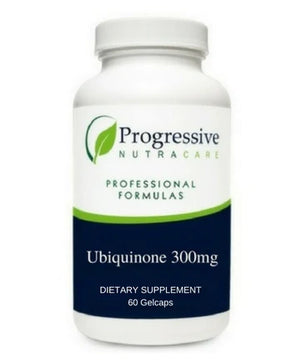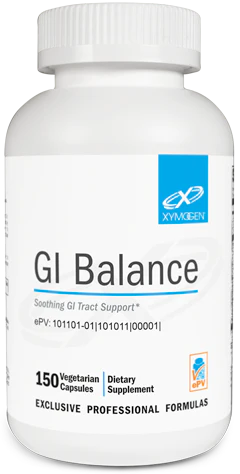IBS, Ulcerative Colitis, Crohn’s Disease? Why The GAPS Diet May Be Your Answer

IBS, Ulcerative Colitis, and Crohn’s Disease. It can feel like someone’s taking a corkscrew and twisting it into your gut. And, it’s not a pain in just one place. It travels… squeezing and pulling at the most sensitive areas.
Your body rebels and the very food you eat causes you pain. Yet, you might crave that selfsame food, the one you know that hurts.
There may be a way out, there is hope, and a diet called GAPS Diet could help you significantly.
What Is the GAPS Diet?
Gut And Psychology Syndrome, GAPS, Diet is a strict elimination diet that helps reduce pain and inflammation by cutting out grains, dairy, starchy vegetables, and refined carbs.
The main goal is to help people with mental conditions, such as ADD and autism. Although controversial, it has a wide following for people who have issues with mental disorders, autoimmune diseases, gut health, and who are receiving treatments for cancer.
It forms around the theory that leaky gut syndrome or intestinal permeability allowed chemicals and bacteria to enter the bloodstream and affect the brain. This is a big reason for inflammation and disruptions in proper brain function.
“For some patients, the GAPS diet has been very effective in healing the inflammation in the gut. The correlation between the digestive system and the brain is fascinating. Something as simple as changing your diet can have a strong effect on your overall health, but especially how your brain functions. Though the introduction phase and parts of the diet can be strict, it provides the nourishment needed to begin the healing process. The nutrition staff truly enjoys walking with our patients through the process and are here to help answer any questions and provide support.” Says our Registered Dietician Nicki Strovinskas.
Three main phases include an introductory phase that eliminates target foods, the GAPS Diet, which monitors health conditions, and the reintroduction phase for getting back foods in your diet to see what causes a problem. We detail the phases below.
How Does The GAPS Diet help IBS, Ulcerative Colitis, and Crohn’s Disease?
When a person cuts out foods that typically cause pain, inflammation, and other health problems, the body has a chance to recover. The majority of foods that cause inflammation include processed foods, grains, dairy, and starches.
If you read our Journey Through The Digestive System, it tells you about how some of the components of bread and other unnatural ingredients, such as chemicals, affect your stomach and intestine. You’ll learn about how these things disrupt the probiotics and can damage your ability to absorb nutrients.
In the beginning, the GAPS Diet is stringent, limiting people to just a few ingredients. And, more are added over time for a healthy diet that allows the body to heal.
What Else Can The GAPS Diet Help?
- Autism
- ADD & ADHD
- Autoimmune Disorders
- Dyspraxia
- Dyslexia
- Depression
- Cancer Treatment Side-Effects
- Schizophrenia
- Tourette’s Syndrome
- Bipolar Disorder
- Obsessive-Compulsive Disorder (OCD)
- Eating Disorders
- Gout
- Childhood Bed Wetting
It’s highly unclear if the GAPS Diet cures many of these problems, or simply removes aggravating ingredients. Studies to suggest that it works and the testimonials of many users proclaim its validity.
As you’ll see during the maintenance phase of the GAPS Diet, the diet is exceptionally healthy, echoing our recommendation of comprising three-quarters of your intake of fruits and vegetables and choosing healthy protein to fill in the rest.
So, let’s take a look at precisely what the GAPS Diet is and how you can do it.
A Beginner’s Guide to the GAPS Diet
Before you begin the GAPS Diet, there are a couple of supplements recommended. We’ll go over these after we talked about the three phases in the types of food. The founder of the diet, Dr. Natasha Campbell McBride, says the food is the essential part. And, these supplements help provide the body with nutrients it has probably been missing for quite some time.
The three phases can last over several years. Depending on the severity of problems in your guts, you may move through the phases quickly or slow.
Introduction
Welcome to the most intense portion of the diet. We’re eliminating nearly all foods from your diet, and you will experience the most significant changes. This phase breaks down into six steps:
Step 1
The only foods you can consume are homemade bone broth, juices from probiotic foods and ginger, mild digestive teas with honey, and a small amount of homemade yogurt or kefir.
Step 2
Add in stews made with vegetables and organic meat or fish. You can also add raw organic egg yolks and ghee.
Step 3
Add in fermented vegetables, avocados, raw yolks of eggs, and duck or goose fat.
Step 4
Add in grilled or roasted meats, cold-pressed olive oil, and vegetable juices.
Step 5
Add in raw vegetables, raw fruit juices, cooked apple puree, and other raw fruit except for citrus.
Step 6
Add in citrus.
Each of these steps can last between 1 and 3 weeks, depending on how you feel after each addition. You should start with small amounts and build up to a standard serving gradually if you tolerate the food without issue.
If you introduce a food and you experience a reaction, completely eliminate that food from your diet.
Maintenance
The maintenance phase of the diet generally lasts 1½ to 2 years, based on the amount of healing a person needs to do. Over this time, if a food produces a mild intolerance, it will show itself during this period. It may also be necessary to go back and go through the six steps if a problem arises.
The standard diet includes all vegetables and fruit, fresh meat from hormone and grass-fed animals, animal fats and butter, fish, shellfish, organic eggs, and fermented foods. You can also have some nuts, and it is generally recommended to keep the quantity a serving or less.
The diet recommends not to eat fruit and meat together, although it is not clear why. Some sources say it is because the sugars within the fruit ferment, while others say the fruits cause the meats to putrefy.
You should consume bone broth with every meal. For people who have joint pain, the collagen within homemade bone broth can help you feel better.
The maintenance phase lasts until you experience six months of consistent healthy digestion and bowel movements. Then, you can move on to the Reintroduction phase.
Reintroduction
The final phase of the GAPS Diet is the reintroduction phase. This is where you start to introduce other foods, such as bread, pasta, and other foods. Home-baked treats are included here.
During this final phase, the GAPS Diet, you can add in other foods that you choose. Stick to introducing one food at a time and observing your digestive system and bowel movements over the next two to three days.
It is still recommended that you avoid processed foods, standard white bread and pasta, and other high-sugar foods.
Supplements
During the GAPS Diet, your food is greatly restricted. This can limit you on some of the nutrients that you need regularly. Let’s look at what you can add to help your body recover.
Probiotics
We have a great article demonstrating how good probiotics are for your system. Some people with digestive issues tend to have dysbiosis within their guts, introducing healthy probiotics can help restore that.
Essential Fatty Acids In Cod Liver Oil
These are essential fats for your brain and the repair mechanisms of your body. Healthy fats allow our body to repair the damage quickly and produce hormones that make us feel better. These fatty acids are various omega-3 fatty acids, such as DHA and EPA. The body needs to produce healthy hormones to keep your heart healthy and repairing damaged.
Digestive Enzymes
Many people, especially as they get older, have a reduced ability to produce digestive enzymes, especially the hydrochloric acid necessary in the stomach to digest properly. By adding digestive enzymes, especially with hydrochloric acid, can help you digest your food better and absorb more nutrients.
Will The GAPS Diet Work For Me?
Despite being around for a while and having a significant following of happy devotees, there’s no specific evidence that shows the GAPS diet works for mental disorders. Many studies indicate the various pieces impact the body positively, and many people benefited.
For example, we know eliminating sugar, wheat, and processed foods considerably improve the digestive health of most people. We also have multiple studies showing children on low sugar diets tend to have lower symptoms of ADD. But, there are no studies that show the GAPS Diet alone cures ADD.
We only have parents and grateful kids who say it does.
We conclude that the GAPS Diet is beneficial because it focuses on removing problem foods and turning the focus on healthy eating. Whether or not the specific protocol is the determining factor for healing is still unclear.
You should be careful if you are still in a growing phase of life, typically before the age of 25. Younger people require higher amounts of nutrition, especially protein, despite their smaller size. Because of the extreme restrictive properties over the long term, it could cause malnutrition.
We suggest working with one of our doctors to do the GAPS Diet properly and to make sure that your body is healing without any side effects.
- Andriy Boychuk







Comments 1
Lorena
Thank you for the opportunity to ask a question.
Is weight loss inevitable on Gaps diet ? Already thin can’t afford to lose more weight.
Been on stage One (1) for 3 weeks now